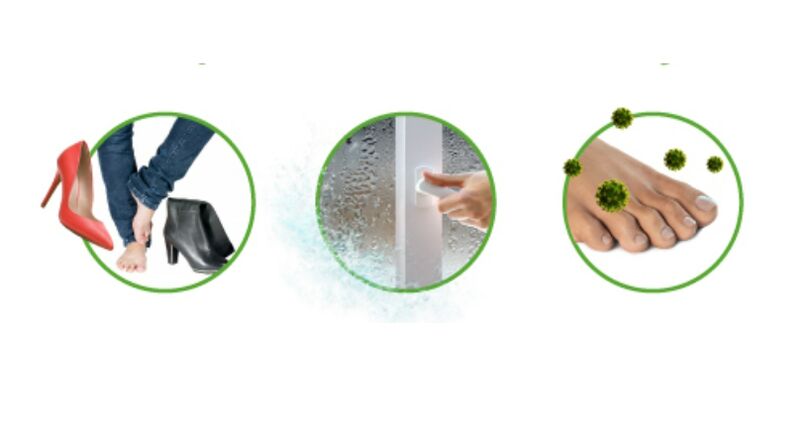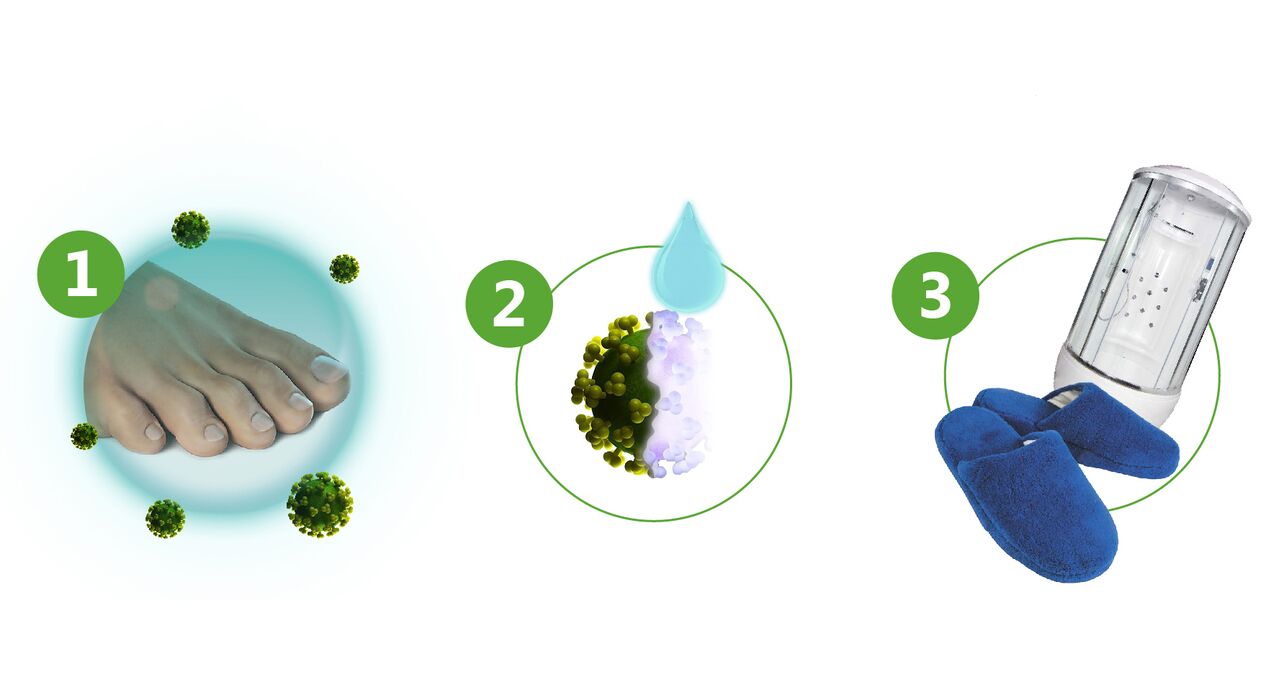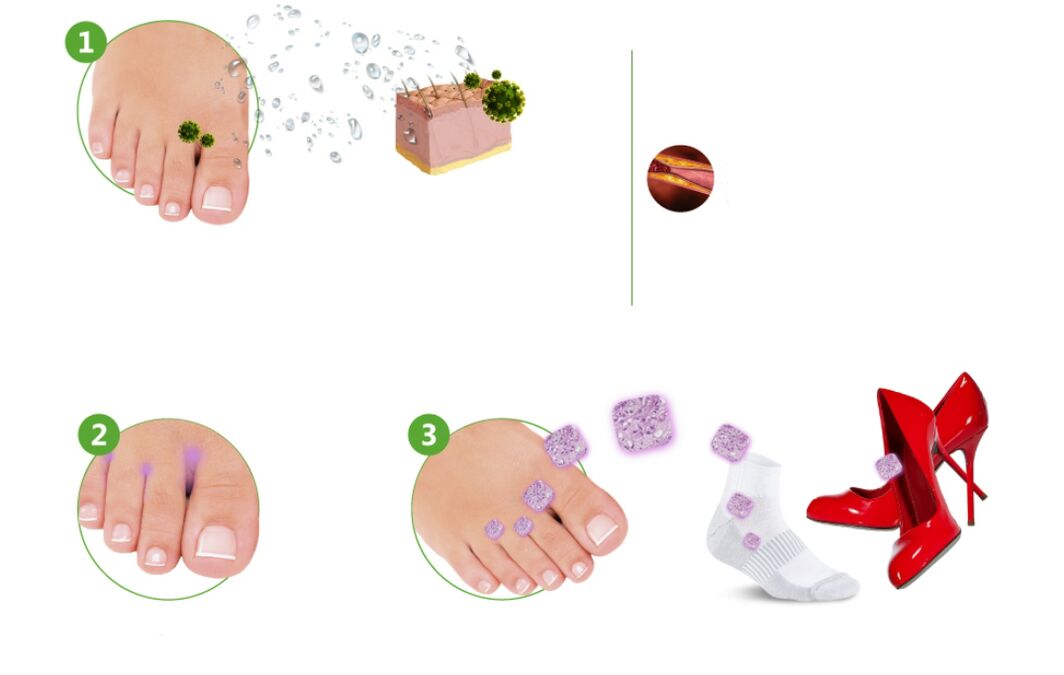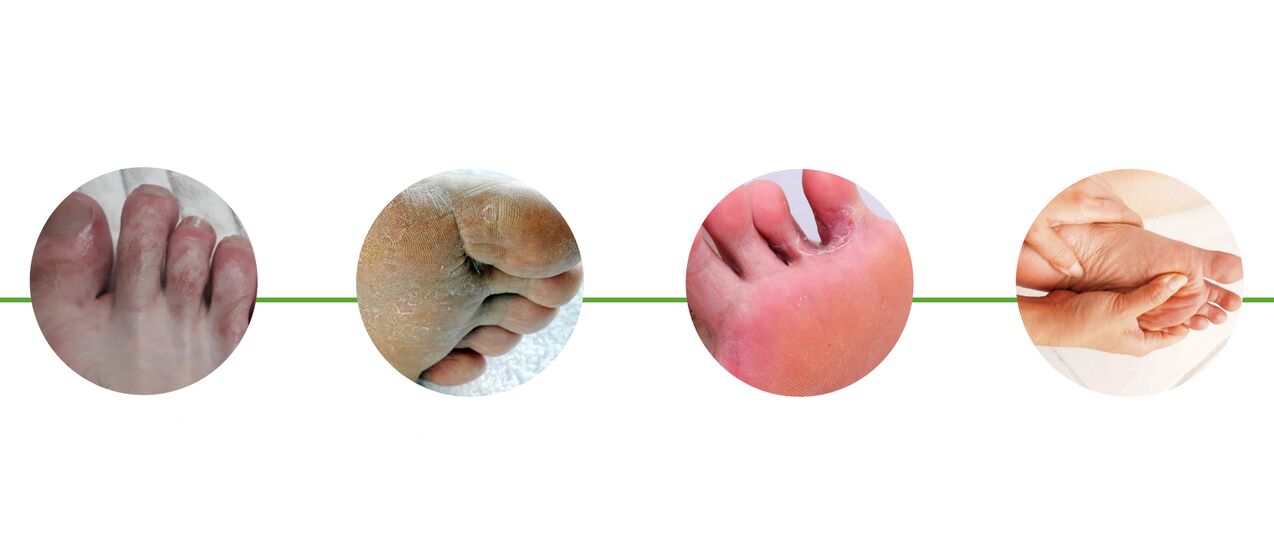One of the most common skin diseases is the fungus. It occurs in all ages and professions. The highest prevalence of mycosis is among gay shop workers, miners, athletes, and bath workers, with an incidence of more than 60%. Children suffer quite rarely, but the incidence of mycosis in adolescents is already increasing.
What is foot mycosis
Foot fungus is a group of fungal skin diseases, often with concomitant damage to the nails. These infections cause similar clinical manifestations. They can only be distinguished after microscopic examination of the skin and nails. Mycosis of the skin of the feet is an extremely contagious disease. It spreads from person to person through household items: carpets in changing rooms, showers and pools, footstools, washbasins and floor coverings in baths and saunas. The use of common shoes and socks is dangerous. The continuously peeling surface layer of the skin contains a lot of the fungus itself and their spores. Initially, the interdigital folds are affected and itchy skin occurs. In the future, the infection will catch the whole leg and spread to the nails. The course of the disease requires long, continuous treatment. You can buy an effective preventative to prevent foot mycosis.

Causes of leg mycosis
The disease is caused by microorganisms of the genus Trichophyton, rarely molds and Epidermophyton floccosum:

- red trichophyton (Tr. Rubrum) causes up to 95% of all cases of the disease;
- about one-third of patients also found interdigital trichophyton (Tr. Interdigitale);
- inguinal epidermophyton (E. floccosum) causes the disease in 1% of cases.
Under unfavorable external conditions, the likelihood of infection increases:
- high humidity;
- tight shoes;
- frequent visits to pools, saunas and other wet areas;
- presence of a sick person in the family.
Some internal diseases also contribute to the development of a fungal infection:
- sweating of the feet;
- immunodeficiency;
- intake of corticosteroid hormones within;
- goosefoot;
- Raynaud's disease, atherosclerosis of peripheral arteries, obliterative endarteritis, varicose veins;
- diabetes.

What happens during an illness
Mycosis of the legs rarely develops on healthy skin. Even if the fungus comes to the surface, it cannot penetrate the thick layer of intact epithelium. Due to unfavorable external factors, the epidermis accumulates and loosens moisture. Fungi penetrate the thickness of the skin and begin to multiply actively. This is further aided by vascular diseases and disorders of the immune system, which are associated with malnutrition and local defense mechanisms in the foot. The growth of fungi damages the areas between the fingers, causing intense peeling and discomfort. The rejected harness gets into the socks and shoes and becomes a source of re-infection. Therefore, when treating mycosis, the inner surface of the shoe should be treated with a special composition against the fungus.

Symptoms
There are traditionally the following forms of foot mycosis, which can be seen in the picture:
- Squamous: one-sided exfoliation and slight itching in the arch of the foot. This form is often not recognized.
- Intertriginous: the folds between the toes are affected and then the process goes to the back of the foot. Crying cracks appear, accompanied by itching. Bacterial infection may be associated with the development of erysipelas.
- Dyshydrotic: In the arch of the foot, the blisters merge with light and then with turbid content. They open up with the formation of painful erosions. This type is accompanied by itching and pain.
Mycosis of the skin of the foot may be accompanied by fever, poor health, headache, and enlargement of the inguinal lymph nodes in the acute period. In the case of Trichophyton infection, the fingernails of the I or V finger are affected, in the future the process will spread to all the nail plates. First, yellow spots appear on the free edge of the nail, then it thickens, loosens and crumbles. Therefore, complex products such as skin care and nails should be used to treat foot fungus.

Diagnosis of the disease
Detection of the disease is based on the analysis of external manifestations and the isolation of the fungus from the skin surface. Microscopic examination of the affected epithelium and nails is performed. They are grown on a medium to accurately determine the type of microorganisms. A distinction must be made between foot mycosis and non-fungal lesions:
- intertrigo;
- eczema;
- psoriasis;
- hyperkeratosis.
Accurate diagnosis provides good treatment results.
Treatment of foot mycosis
The therapy takes place in 2 stages. First, acute inflammation must be eliminated and horny overlaps on the legs must be removed. Warm foot baths with potassium permanganate and body lotions with boric acid solution. After removing the dense epithelium, creams containing anti-inflammatory hormones and antibiotics are used. Once the inflammation has stopped, these creams are replaced with similar ointments. In the second stage of treatment, antifungal ointments and creams (such as those belonging to the group of imidazole antifungal agents) are used. They should be applied 1-2 times a day to clean, dry skin with a gentle rub. They treat not only the affected area but also the surrounding foot surface. The duration of treatment is about one month. Foot mycosis is successfully treated with medications, special skin care creams and nails that can be purchased at the pharmacy. Advantages of drugs in the fight against fungi:
- high activity against the fungus that causes leg mycosis;
- Safety;
- hypoallergenic;
- at an affordable price.
The lotion can also be used to treat other skin conditions:
- pityriasis versicolor;
- skin candidiasis;
- erythrasma;
- secondary bacterial infection in the background of mycosis.
The medicine is applied twice a day, rubbing the affected areas gently. The skin should first be washed with soap and dried well, especially between the fingers. The treatment lasts until the symptoms of the disease disappear and then for another 2 weeks. The drug is well tolerated. Causes skin irritation only occasionally. She has only one contraindication - the first trimester of pregnancy. Of course, clotrimazole is not used for individual intolerance. One of the advantages of the cream is that the drug penetrates the nail plates perfectly, which distinguishes it from the cream or ointment. Regular use of this drug provides excellent results in leg and nail mycosis without the use of additional funds. Prescribing antifungal medications is required to damage your nails.
However, they use therapeutic varnishes that are applied to the nails 1-2 times a week until complete healing.
Preventive methods
Treating a fungal infection takes a long time. Foot mycosis requires the use of medications, the cost of which is quite high. Prevention of the disease is especially important in people who have risk factors for the disease. Athletes, swimmers, hot shop staff are advised to use antifungal and antibacterial agents such as sprays or lotions on a regular basis. Such products are safe, do not damage the skin and do not cause irritation. With regular use, the likelihood of foot fungus is significantly reduced. Undecylenic acid spray is useful to prevent re-infection. To do this, the medicine should be sprayed on the inside of the shoe every month. The active ingredient in the spray, undecylenic acid, is also safe for long-term use. It should be applied to dry, clean foot skin before visiting each pool or similar place. No contraindications have been identified for the use of this drug. Pregnant and lactating women should use it with caution. The external causes of the disease must be eliminated:
- wear suitable boots and shoes;
- use high-quality sports shoes made of natural materials;
- wash your feet daily and treat your nails in a timely manner;
- fight sweaty feet;
- when visiting a spa, pool, beach, it is better to use lightweight silicone or rubber slippers.
General strengthening of immunity, treatment of diabetes mellitus and vascular diseases is required.
























